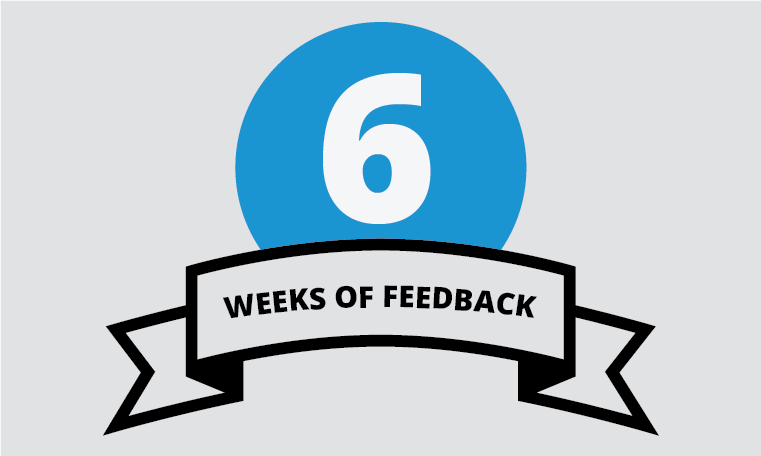The competition among online stores is colossal, so they have to fight for a place in the sun. Сreative solutions are essential here to increase customer engagement. You can constantly fill your site with new content and try different promotion formats. And this can have its effect, but it may not be sufficient for online stores and not persuade customers to purchase in your store. As opposed to classic content marketing, data-driven micro-content has performed well in recent years. It is an effective way to provide users with interesting and useful information, thereby increasing the value of an online store for customers.
So let’s talk today about data-driven micro-content, its use and peculiarities, and how it can increase sales.
Content statistics
According to the content gurus at Visme, 96% of successful content marketers say content marketing is what helped them gain user trust and boost sales. But how? In the mid-2000s, push-to-buy emails and sales copy were popular. But lately, this does not bring the former effect and even annoys users. Such content is gradually replaced by informative and useful content that is beneficial to the brand’s audience, even if this content does not directly convince people to make a purchase.
90% of experts confirm this and use informative content instead of sales messages. At the same time, 55% of respondents surveyed by the Content Marketing Institute use interactive content helping to engage the audience, increase loyalty and the time spent on the site, and finally, boosting sales.
The Beckon platform has conducted research demonstrating interesting results. Among the top companies that spent a total of 16 million US dollars on omnichannel marketing content, most experienced no growth in user engagement. As such, branded marketing content does not help drive engagement. And this makes sense. Most content marketing materials are simply lost in the vastness of the world wide web. Many users don’t even see your articles, posts, and other types of content.
What is data-driven micro-content and why is it needed?
Micro-content is a form of content delivery that is rapidly gaining popularity. Its essence lies in the use of short content (visual and textual) delivering information in a concise form. This format is more engaging for users and easier to distribute over the network. We are talking about short posts, headlines, callouts, quotes, graphs, etc.
Users are often not ready to read dozens of paragraphs to find the information they are interested in, they want easy to find information immediately. Here micro-content enters the game. Such content still contains valuable information, but its concise form makes the chances that your customers will open, click, read, and remember the content higher,” says Jeff Richards, Head of Content at Essay Tigers.
A study by the French Institute, INRIA, confirms the above. Its results show that users often repost materials without reading them. They only need to read the title to decide if they want to share this information.
Data-driven micro-content refers to short pieces of content that are based on some statistics, interesting facts, numbers, survey results, etc. People like numbers and a laconic text with statistics and proof is more likely to be read and shared than an epic article. Statistics can be either based on your company’s results, surveys, and research or obtained from external sources.
How does data-driven marketing work?
Data-driven marketing is building a marketing strategy based on data analysis. This approach allows you to understand who your client really is, create a client portrait, identify problem areas in current advertising campaigns, put forward and confirm hypotheses, etc. In short, data-driven marketing is based on empirical data and provides insight into how your business can make more money.
You collect statistics and develop a marketing plan based on these findings. The data you have collected and analyzed helps run your advertising campaigns more effectively, create content that is truly interesting for different segments of your audience, and so on.
Benefits of data-driven marketing
Marketing techniques and statistics have come a long way. In the past, attempts to engage an audience were limited to using untargeted methods that lacked data and relied on intuition and a target audience analysis that often focused on customer profiles without proper data backing. Needless to say, such approaches are not accurate. Therefore, companies were forced to promote their products or services through trial and error, losing most of the audience and marketing budget along the way. The situation was especially difficult with goods that had no comparative products on the market.
However, with the development of statistical models with marketing methods, new opportunities have emerged. With a data-driven approach, companies are now able to:
- get detailed information about their actual target audience;
- analyze customer behavior;
- personalize promotional offers;
- choose the right advertising channels;
- target specific audience segments.
Essential data-driven eCommerce strategies
Today there are a large number of strategies for using the data-driven approach in eCommerce. Before developing a strategy, you need to understand what goals you are pursuing. Any strategy is developed based on the products you need to sell or the content you are promoting, and what actions users should take on your site.
After you have decided on your goals, it’s time to develop plans for content and micro-content marketing which will help determine the statistics you’ll need. There are many tools out there to help you get the data you need.
After you have collected statistics, you need to systematize them. For example, CRM systems are suitable for this, where you can enter and sort the data. After analyzing the information, you may use it to develop targeted content.
5 ways to use micro-content on your website
There are many ways to use micro-content. Here are 5 main easy-to-use methods to help you grab the attention of users and increase your sales.
- Single charts
If you plan to prove the benefits of your product, statistics are best suited for this purpose and statistics look most effectively in a graph. The main thing is to show the information convincingly. For example, if you want to show that a product is really best-selling, the number of its sales should be impressive. Otherwise, users are unlikely to pay attention to such content.
- Facts backed by data
Users love numbers, short quotes, and surprising facts. Information should be presented shortly and convincingly. To find interesting statistics, research your product niche in detail. This type of micro-content is especially great for warming up customers who know what they need, but are not sure if they should specifically purchase on your website.
- Recipes
We’re talking about “how-to” content. In this case, you need to provide your customers with small advice or instructions on the use of this product. A small and simple “recipe” can be a powerful weapon in promotion, as users like sharing different recipes, short pieces of advice, etc.
- Rendered maps
If you work in the eCommerce niche, you probably sell your goods in several regions or even worldwide. In this case, you can use rendered maps of the geographic data associated with your products. For example, how your pasta is bought by customers around the world or in which countries a particular type of pasta is popular. In this case, you can use a regional or world map and put statistics or short excerpts from your research on it.
- Venn diagrams
Venn diagrams have been especially popular in recent years. With their help, you can quickly, conveniently, and originally convey any information to your clients – for example, all the advantages of a particular product in just one picture. For this, you will need to use one of the tools that can help you create Venn diagrams right off the bat. For instance, Venn diagram creator from Visme works perfectly in this case.”
Using a Data-driven marketing strategy for eCommerce
Using a data-driven approach allows you to collect massive amounts of information about customers, and based on this information, draw up an e-commerce marketing strategy. The numbers will fortify your approach and limit mistakes, you will be able to timely track the results of your actions, make the necessary changes, and predict further customer behavior. It will take your marketing strategy to a whole new level. Here’s what you can do with data-driven marketing:
- Reactivate idle customers. Engage customers who have previously placed orders on your site but no longer do. Thanks to data-driven marketing, you can identify why this happened.
- Focus on channels that pay off. The audience can come from many different channels, but you don’t have to try to attract customers from all existing sources. Analyze what sources you get customers from and focus on those.
- Earn customer loyalty with the right products. Thanks to segmenting, you can offer different customer groups what they are really looking for. This will earn you their trust and loyalty.
- Personalize campaigns & offers to customer liking. By using marketing data, you can offer personalized discounts on specific products. For example, an additional 10% discount on recently viewed items.
- Use demographic data to customize the experience. People living in different regions may have different needs and interests. And you should take it into account. Men and women of different ages are certainly interested in different products, so you can boost your sales simply by offering them the right products.
- Email marketing automation. Bulk mailing no longer works as efficiently as it used to. To achieve a real effect and sales growth, use special services (Moosend, MailChimp, UniSender, SendPulse, etc.) that allow you to segment your contact base, send personalized letters, create a chain of letters, and so on.
- Centralize your data. Information needs to be managed systematically to prevent chaos and get real results from data-driven marketing. Save all data in one CRM system and update it regularly.
- Create a buyer persona. You have to understand who is the consumer of each of your products. Based on the data obtained about your customers, develop a buyer persona for each of your group products.
- Power your marketing decisions with the help of personas. Each of your marketing decisions and activities should be targeted at a specific buyer persona. Your activities, new products, offers, and advertising campaigns should be aimed at solving a particular problem of a specific segment of your audience.
- Selection of distribution channels. Some channels bring real sales, and there are channels that you just spend your budget on every month. Based on the sales statistics, you will be able to determine the effective distribution channels.
- Right timing. Thanks to statistics, you can learn at what time and on what days the interest in your site and its specific products is higher. The same goes for other marketing activities like opening emails, reacting to social media posts, reading blog articles, and so on.
- Email segmenting. According to a study by VB Insights, 50% of marketers still use less than 10 criteria for segmenting their contacts database, although you can segment your audience by many more factors (tens or even hundreds of criteria) and achieve better results.
- Influencer marketing. By understanding who your target audience is and what your customers are interested in, you can work with influencers more effectively.
- Customer journey analysis. It is necessary to constantly monitor the way customers go from the moment they learn about your site to the moment they make a purchase. Analyze sources and user behavior on your website with such tools as Google Analytics and Hotjar.
- Analyze the results. You should evaluate the results of any marketing activities quantitatively according to the numbers obtained. First of all, you may be interested in such data as conversion rate, the number of indexed pages, the position of your site in search results, bounce rate, and so on. If you’re actively working on the SEO promotion of your online store, be sure to track your results via SEO software such as SE Ranking. Analyze the rise or fall with your traffic, look for dependencies, generate reports on indexed pages, key queries which you rank for, and so on.
Ways to engage customers on your eCommerce store
Occasional sales of one product are not an indicator of success. The task of any business is to get systematic sales, increase the average revenue, and engage users to take them through the sales funnel. Our tips below will help you with this:
Сross-selling products. Advantageous offers of related products can significantly increase the user’s average revenue.
Content personalization. Provide your customers with compelling and engaging content. Statistics provide a huge amount of data, from geographic insights to click history. Show users personalized offers and increase both sales and customer loyalty.
Create sales promotions based on information about which products your users are interested in. You can make special discounts on these products to encourage users to buy them.
Social media opportunities. Study the behavior of your customers on social networks, analyze which posts got the most likes, comments, and reposts. Entertain the audience with interesting statistics. A large loyal audience on social media will lead to more sales on your website.
Add high-quality product images. Users want to know exactly what they are buying. Therefore, all photos of your products must be informative and of high quality. All labels and inscriptions must be visible on them.
Use the abandoned cart email technique. An abandoned cart message, coupled with an additional discount on the selected products, will convince the user to make a purchase.
Offer a guest checkout. About a third of online store users do not complete their purchase due to the need to register to place an order. Offer them a guest checkout and enjoy the increase in conversion. You can also use other CRO tools to increase your conversion rates.
- Talk to your customers in real-time. Users may have problems at different stages of exploring your assortment and making a purchase. The sooner you solve these problems and dispel any doubts, the higher the chance that they will make a purchase. Here a live chat can help. And remember that users like to speak to humans, not robots when making decisions about the purchase.
- Provide high-quality online customer support. Here, a CRM system will help you, which will allow you to register your client’s previous requests and provide fast and high-quality support.
Conclusion
With all the variety of different online stores, it is becoming more and more difficult to convince users to purchase on your website. This is where a data-driven approach and micro-content come in. Use all possible sources of statistical data about your website visitors, analyze their interests and preferences. Based on the data obtained, draw up a marketing strategy, engage users through micro-content and analyze your success at every stage. If you rely on numbers and statistical data, your chances of success are greatly increased.
FREE. All Features. FOREVER!
Try our Forever FREE account with all premium features!





